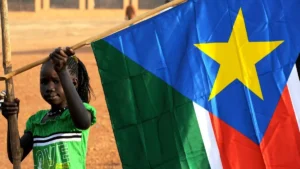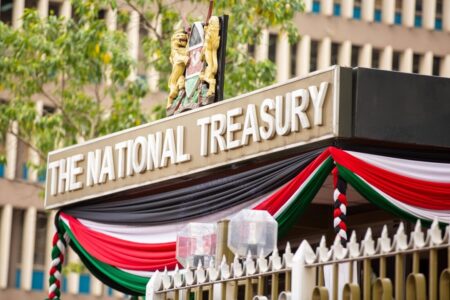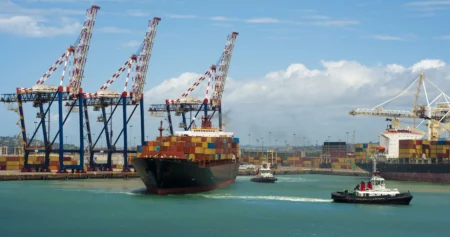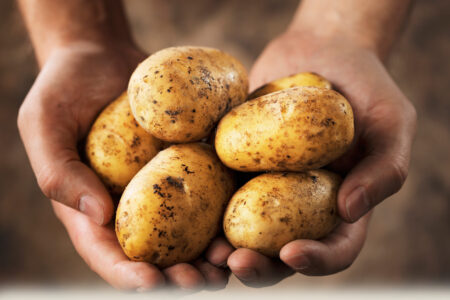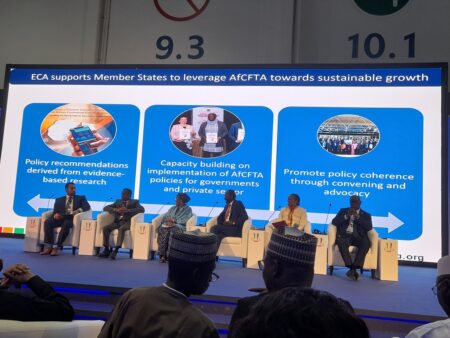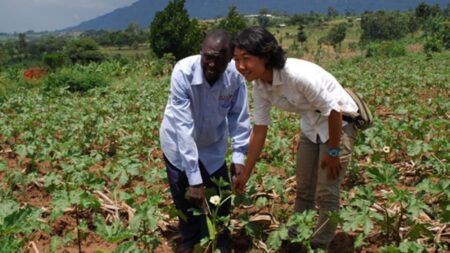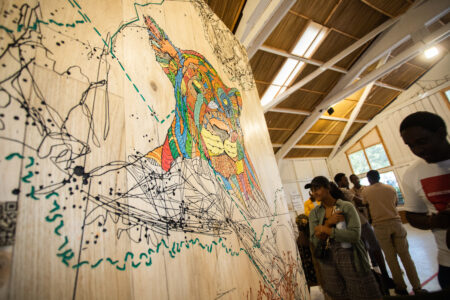- History beckons as push for Kenya’s Ruto to address US Congress gathers pace
- IMF’s Sub-Saharan Africa economic forecast shows 1.2 percent GDP growth
- The US Congress proposes extending Agoa to 2041, covering all African countries
- Millions at risk of famine as fuel tax row halts UN aid operations in South Sudan
- Empowering the Future: Humanity Protocol’s Dream Play Initiative
- TikTok Community Guidelines update aims to curb hate speech and misinformation
- Rwanda sees 39% surge in bank borrowers as Sacco and MFI loan uptake declines
- Kenya Ports Authority wins dispute case over cargo release
Browsing: premium
- Kenya’s forex reserves dipped to $6.2 billion on May 19, an eight-year low, before a slight improvement to $6.4 billion on May 26.
- At $6.4 billion, Kenya’s reserves are just 3.60 months of import cover, which is below the Central Bank of Kenya’s desired target.
- What’s more, the reserves are below the East Africa Community preferred threshold of 4.5 months of import cover, hence exposing the country to high volatilities in the global market.
A dip in export earnings, coupled with reducing diaspora inflows at a time of huge debt repayments have left Kenya grappling with low forex reserves, raising concerns on the health of East Africa’s economic powerhouse.
The low forex reserves are further compounding the dollar shortage problem that has been gripping importers for months. Importers, mainly in the manufacturing and the energy sectors, have been struggling to secure the greenback to replenish their suppliers.
Kenya’s forex reserves
…- As we mark Africa Day today, our writer, Ken Mutuku, takes a deep dive into the port industry across the continent. He highlights it vast potential and the big challenges holding it back.
- Every year, May 25th, serves as an opportunity to acknowledge the remarkable progress Africa has made, while reflecting on the challenges it continues to face.
- Key ports offer entry into several resource-rich regions and countries such as Kenya, Tanzania, Mozambique and South Africa.
Africa’s port industry continues to play an integral role in the continent’s supply chain cycle, and has been powering import and export trade of developing economies since colonial times. Despite this, it is still an underutilized and underdeveloped resource that requires significant financing and upgrade to power accelerated growth in resource-rich African economies.
Africa, a continent of vibrant colors, diverse landscapes, and rich cultural heritage, is a true testament to the human spirit’s …
- Bittersweet consequences. Global chocolate value chains are fueling desertification across West Africa, a new report says.
- As chocolate demand soars, Côte d’Ivoire, the world’s largest producer of cocoa beans is paying a huge price with 80 percent of its forest cover lost.
- Corruption fueling illegal logging and deforestation of rainforests for cocoa farms
The raw material needed to make chocolate is cocoa beans, but West Africa, which produces 40 percent of the world’s produce, is destroying its rainforests at an unprecedented pace to feed global demand.
Already, Côte d’Ivoire, the world’s largest producer of cocoa beans has lost 80 percent of its forest cover over in just sic decades, the Food and Agriculture Organisation (FAO) reports.
FAO’s Transparency, Traceability and Deforestation survey in the Ivorian cocoa supply belt shows that the unmonitored value chain of chocolate is leaving populations vulnerable to adverse effects of climate change.
Chocolate demand rising globally
…- Global NPL and distressed assets present a promising opportunity for investors looking to diversify their portfolios.
- A forum at the Annual Investment Meeting explored how rising interest rates are creating opportunities for distressed debt investors.
- Key speakers discussed the different asset classes, including real estate, corporate, and consumer debt.
Investors have been urged to capitalise on investing in distressed assets and non-performing loans to grow their portfolios. According to experts at the Annual Investment Meeting (AIM), non-performing loan (NPL) investing is becoming a popular strategy for investors seeking high returns.
The conference, which was held in two panels examined the current global economic environment and how rising interest rates are creating opportunities for distressed debt investors.
According to Harvard Business School, distressed debt investing is the process of investing capital in the existing debt of a financially distressed company, government, or public entity.
Why having partners is a must
The …
- The average potato yield in Sub-Saharan Africa stands at 7.8 tonnes per hectare.
- This is too low compared with India at 23.7 metric tonnes per hectare and a global average of about 21 tonnes.
- Whereas many African countries with vast agricultural potential import the crop, Egypt is an exception.
With the exception of Egypt and South Africa, the continent is a net importer of common food crops including potatoes despite the huge potential of many countries to grow the tuber that can tackle Africa’s food crisis.
Grown in over 125 countries and consumed by at least a billion people every day, potatoes are arguably one of the world’s most important root crops.
According to FAO, the average potato yield in Sub-Saharan Africa stands at 7.8 tonnes per hectare. This is too low compared with India at 23.7 metric tonnes per hectare and a global average of about 21 tonnes. Data …
- By enhancing intra-African trade, AfCFTA estimates that the continent with gain $195 billion by 2045.
- These gains are projected to be mainly realised in industry, services, agrifood, and energy sectors.
- By collaborating under AfCFTA, countries can greatly boost regional supply chains for the global electric vehicles market.
African countries need to embrace a set of reforms critical in driving Africa’s free trade plan, AfCFTA. The call comes even as more African leaders sign the agreement on the African Continental Free Trade Area (AfCFTA).
AfCFTA has the potential to transform regional trade and thereby lift billions of livelihoods in Africa out of poverty. To realise these benefits however African leaders need to go beyond blueprints.
“It is not for lack of blueprints that Africa has not structurally transformed,” United Nations Economic Commission for Africa (UNECA) Secretary-General Antonio Pedro said.
Mr Pedro was speaking at the Africa Regional Forum by UNECA on …
According to SWIFT, African regions with strong integration saw increased use of local currencies and decreased use of hard currencies such as the US dollar. For instance, the use of the West African franc by the eight countries in the West African Economic and Monetary Union has overtaken the South African rand and the British West African pound.
This implies that boosting the use of regional currencies will shield the African trade market from adverse global conditions associated with the performance of US dollars. However, further regional coordination remains necessary to build a continental payment system that encourages the use of local correspondent banks and local currencies. These moves can help in managing currency depreciation to boost African trade finance. …
- 20 investments in manufacturing, ICT, energy, health and agri-business have been signed in past two months.
- Latest Kenya-US trade ties place the East African country at a pole position on attracting more American dollars.
- Since President William Ruto took office in September 2022, Kenya-US engagements have been on a full throttle.
Deepening Kenya-US trade ties have started to pay dividends as American firms move to invest in East Africa’s largest economy. With modern infrastructure, and skilled labour force, Kenya offers one of the best opportunities for US investors eyeing the region.
Currently, Kenya is the second most preferred destination by Americans seeking to invest in Africa. The 2023 US government review shows Kenya hosts 142 American firms while Nigeria has 195 conglomerates.
Latest developments, however, place Kenya at a pole position in attracting more American investors in the short to medium-term.
Deepening Kenya-US bilateral ties
Since President William Ruto took …
- Sustainable agriculture employs 65-70 percent of Africa’s labour force.
- Only two to three percent of African renewable water resources are usable compared to the 5 percent worldwide.
- In 2019 a report revealed that Africa produced more than 50 percent of the world’s cassava.
A severe drought has left millions of people in Africa dependent on grain from Ukraine, a country at war with Russia, yet a number of crops that could support more climate-resilient and healthful food systems in sub-Saharan Africa continue to receive limited attention.
Across Africa, cassava, sugarcane and maize stand out for supporting millions of families in governments’ quest to maintain food security
Sustainable agriculture is one of the highlights that support Africa’s economic development. For decades these cash crops in Africa have accounted for almost 20 percent of the entire continent’s revenue. It has further advanced and introduced concepts such as agritech, significantly teaching better farming …
- The sprawling Maasai Mara National Park has been a major source of pride and revenue for Kenya over the years. What is, however, not famous for is the generation of unique scientific and design plans.
- A new initiative is, however, showing the richness of the game research in projecting data from the life of three lions and helping conservationists understand what wildlife go through in the wild.
- This initiative visualizes predator data from Kenya Wildlife Trust (KWT) as a series of digital and physical data-based ‘portraits’ along with interactive artwork created in collaboration with tech developers, designers, and story gatherers.
The sprawling Maasai Mara national park has been a major source of pride and revenue for Kenya over
the years. What is however not famous for is the generation of unique scientific and design plans.
A new initiative is, however, showing the richness of the game research in projecting data …

